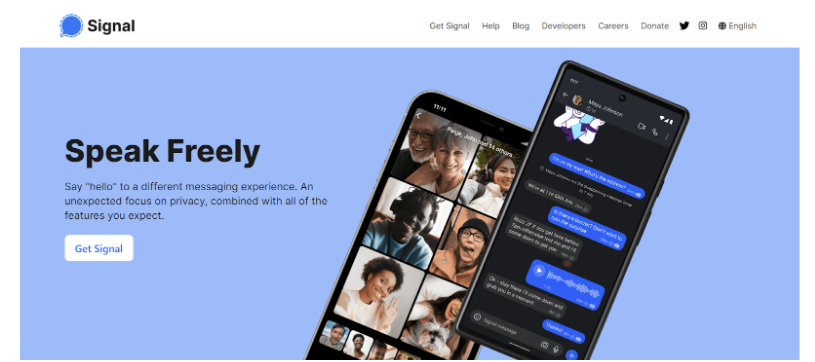In recent years, the financial industry has witnessed a significant increase in scam activities, with fake bank fraud alerts emerging as a prevalent method used by fraudsters. These scams cleverly mimic genuine bank alerts, tricking people into disclosing sensitive information or making unauthorized transactions.
Given the sophistication of these schemes, it’s more crucial than ever to adopt a posture of amplified vigilance and to be prepared with comprehensive knowledge about these deceptive practices. Understanding the mechanisms of these scams and recognizing their warning signs can serve as a formidable barrier against potential financial harm.
In this blog post, we will explore the sophistication of fake bank fraud alerts, detailing how they operate, the common tactics used by scammers, and effective strategies for safeguarding one’s finances against such threats.
What are Fake Bank Fraud Alerts?
Fake bank text messages are a sort of smishing in which fraudsters use text messages to imitate financial organizations, ask for sensitive information, or trick victims into paying money. Scammers send their victim’s false fraud notifications, payment confirmations, or account suspensions.
How do fake bank fraud alerts or purchase notifications work?
Fake bank fraud alerts and purchase notifications are sophisticated scams designed to trick victims into losing control of their financial accounts or personal information. Here’s how these deceptive schemes work:
1-The Initial Contact
Victims are first targeted through a deceptive text message, which asks them to respond with YES or NO to either confirm or reject a supposed money transaction. Following their response, the next phase of the scam develops when they receive a call from someone fraudulently claiming to be a bank representative.
2-The Fraudulent Claim
This imitator then falsely informs the victim that a financial transfer has incorrectly been executed. To correct this error, the victim is instructed to manually send the amount back using a money transfer application like Zelle, a service designed for transferring funds among acquaintances.
3-The Misdirection
Contrary to the scammer’s promises, following these instructions does not return the funds to the victim’s account. Instead, the money is directed to the scammer. Once the transfer is completed, reclaiming the lost funds becomes a tough challenge, often with banks refusing liability by highlighting the customer’s role in authorizing the transfer.
What you need to know to avoid fake bank fraud alerts
To protect yourself from falling victim to fraud alert scams, it’s essential to prepare yourself with knowledge about what banks will and will not do. Understanding these can help you identify and avoid these scams effectively.
1-Recognizing Red Flags
Be aware that banks will never request stopping fraud through a money transfer service. Should someone contact you asking to use apps like Zelle or Venmo to prevent fraud, it’s a clear sign of a scam.
2-The Pressure Tactic
Scammers often use aggressive and urgent language to provoke anxiety, pressuring you to act impatiently. They may claim that immediate action is necessary to transfer funds to prevent further loss. Remember, staying calm and questioning the legitimacy of the call is crucial. If faced with this situation, hang up and contact your bank directly.
3-Protect Your Personal Information
Never reveal sensitive personal information to unverified callers. Scammers may try to persuade you to share your birth date, PIN, Social Security number, or other confidential details. Legitimate banks will never ask for this information in an unsolicited call.
4-Caller ID Spoofing
Scammers possess the technology to copy phone numbers, creating the illusion that the call is coming from your bank. Even if your caller ID shows a legitimate business name, remain suspicious. If in doubt, end the call and dial your bank directly using a number you trust, such as the one on your debit card or official bank statement.
How to Protect against fake bank fraud alerts or purchase notifications
Secure your financial information and avoid fake bank fraud alerts by implementing the following strategies:
- Activate two-factor authentication (2FA): One of the most effective ways to protect your online banking accounts is by activating two-factor authentication. 2FA adds a level of security by requiring a second form of verification beyond just your password.
- Create strong passwords: Your first line of defense against unauthorized access to your accounts is a strong, unique password. Choose passwords that are complicated and diverse across several platforms to reduce the risk of illegal access
- Avoid suspicious links: Be wary of clicking on links in unsolicited emails or text messages. These links could lead to phishing sites designed to steal your personal and financial information. If you’re unsure about a link, don’t click on it.
- Refuse to give sensitive Information: Do not give your passwords, PINs, or temporary codes, as they could be used to drain your bank accounts or traded on illegal markets.
- Identify official bank communications: Learn the special short codes used by your bank. This knowledge helps in quickly identifying, dismissing, and blocking scam texts, preventing the unintentional leak of personal information.
6 Common Fake Bank Alerts
Knowing these common scams can help you keep your bank account safe. These common tricks used by scammers pretending to be your bank:
1-Update Your Info Requests
Scammers often send messages claiming your personal information needs updating. These messages might direct you to a fraudulent website where entering your details compromises your financial security.
2-You’re Getting Money Notices
These notices inform you of an unexpected sum of money being transferred to your account. You’re asked to provide personal details or make a payment to release the funds, leading straight into the scammer’s trap.
3-Reset Your Password
Under the guise of security, these alerts prompt you to click on a link to reset your banking password, directing you to a fake website designed to steal your credentials.
4-Big Purchase Alert
Scammers send alerts about a large, unauthorized purchase, creating panic. They then offer a solution that involves divulging your financial information, supposedly to reverse the transaction.
5-Someone Tried to Log In Alerts
These messages claim there was an attempt to access your account from an unrecognized device, urging you to click on a link to secure your account, which is a phishing attempt.
6-Your Account is Locked Messages
These fake alerts say your account got locked due to suspicious activities and often include a link or request for personal information to unlock it, another direct route to compromising your financial safety.
Conclusion
By understanding the common tactics scammers use and taking proactive steps to protect your finances, you empower yourself against potential threats. Knowledge is your strongest ally in this ongoing battle.
We encourage you to not only implement these protective measures but also to share this crucial information with friends and family. Together, through awareness and education, we can build a community that stands resilient against the ever-evolving landscape of financial scams.
We Want to Hear From You!
The fight against cryptocurrency scams is a community effort at Crypto Scam Defense Network, and your insights are invaluable. Have you encountered a scam, or do you have questions about navigating the complex world of digital currency? Maybe you have suggestions or want to share your story to help others. Whatever your experience, we’re here to listen and support you.
Reach out to us at hello@cryptoscamdefensenetwork.com. Share your stories, ask questions, or make comments. Your voice is crucial to building a resilient and informed community. Together, we can improve our defenses and promote a safer digital space for all.
Be a part of the change. Your story matters.
Photos via Pexels







